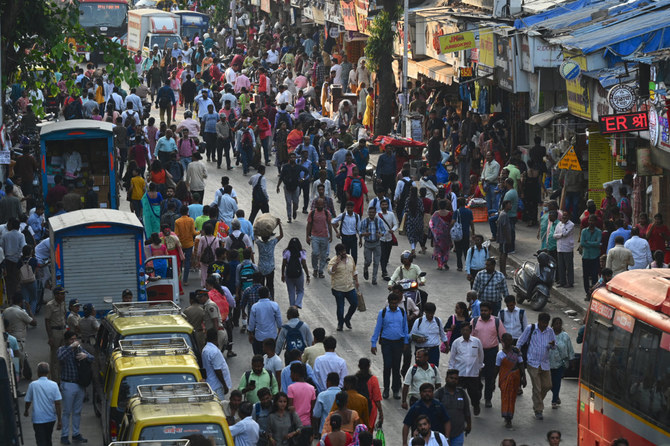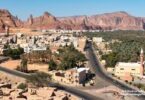Ehtesham Shahid
In a utopian world, the Middle Eastern youth would be jetting off to care for Japan’s rapidly aging population. In exchange for their humanitarian efforts, they would imbibe immense wisdom, absorb splendid culture and, of course, learn a thing or two about technology. Perhaps, we can also learn a lesson from how Asia celebrates aging. That would amount to a region with a youth bulge complementing the world’s most rapidly aging country.
For now, that seems like scenes from a sci-fi movie. Yet, seemingly outlandish notions are not always preposterous, as they help us better understand the world around us. The picture painted above has its basis in a recent McKinsey report aptly titled “Asia on the cusp of a new era.” Terming “demography as destiny,” the report claims that Asia still has the people to fuel substantial growth. However, the headwinds of aging are fiercest in the “Pacific Rim’s higher-productivity regions.”
Aided by young rural migrants, Asia has traditionally supported the shift from agriculture to industry, triggering economic growth, urbanization, demographic changes and environmental impact. To put things in perspective, an additional 600 million people will live in Indian and Chinese cities alone by 2050. However, the undercurrent of a more profound change is now visible as “China and Advanced Asia,” as the report outlines, are aging rapidly.
So, what are its ramifications for the continent and beyond? Aging requires Asia to move its work to where the workers will be, apart from dealing with the first-order higher dependency ratio challenge. As the workforce shrinks due to aging, value chains typically shift to areas with younger populations to help maintain production levels. Such a realignment might involve moving specific industries to countries with younger demographics, such as Indonesia and India. In other words, Japan and China’s losses could be India and Indonesia’s gains.
Technological innovation and automation can compensate for workforce shortages caused by aging populations. Investment in education, training and upskilling workers can enhance productivity, while improved labor market efficiency, including better job matching and mobility, can help address productivity challenges. However, the more desirable option would be greater regional economic integration to facilitate these shifts and ease the movement of goods, capital and labor across borders. Whichever way one looks at it, Advanced Asia and China — “aged Asia” — could have 250 million fewer working-age people by 2050.
Conventional wisdom says the Middle East, with its strategic location and significant investment resources, could play a vital role in these shifting value chains, especially in logistics and finance. Economies in the region seeking diversification away from oil could benefit from increased trade and investment opportunities with Asia. A few other factors are also craving attention. Increased competition for foreign investment and technology might arise even though the Middle East could leverage its strengths to cater to the energy needs of rapidly developing Asian economies.
Political and economic stability is crucial for such shifts in value chains. Regions with political unrest or economic instability might not attract the necessary investment. There is also a risk of overdependence on certain industries or foreign investment, which could lead to economic vulnerabilities. Environmental sustainability is another concern, as rapid industrialization, if not appropriately managed, can lead to increased pollution and resource depletion.
The existing demographic synergies between Asia and the Middle East are critical. It encompasses labor migration, economic interdependence, cultural exchanges, educational collaborations, investment flows and mutual influences in tourism, healthcare and political strategies. These synergies reflect a complex and evolving relationship with significant implications for both regions and create a dynamic interplay, influencing migration, economic policies, cultural exchanges and development strategies.
Labor migration is one of the most significant demographic synergies between the two sides. Many countries in the Middle East, especially in the Gulf Cooperation Council region, have historically relied on labor from Asian countries. As Asian countries deal with aging populations, there is potential for collaboration in healthcare, particularly in areas of elder care and medical technology, which can benefit Middle Eastern countries as they develop their healthcare infrastructure.
Notably, like the diverse Middle East, at least five Asias are bound to follow different trajectories. As the McKinsey report highlights, “Asia was largely in a demographic sweet spot in the ‘Era of Markets.’” Between 1990 and 2022, 55 percent of global growth in the working-age population was in Asia. Moreover, the region’s working-age population grew faster than its overall population. Some jitter is bound to surface when indices shift and other underlying factors kick in. An embattled Middle East, however, would hope for the aging Asia to bounce back.
Aging Asia presents both challenges and opportunities for the Middle East. The challenges, in terms of labor dynamics and economic interactions, present alongside a range of possibilities. These include driving innovation, fostering new bilateral relations and catalyzing economic diversification and development in healthcare and other sectors. How Middle Eastern countries navigate and leverage these dynamics will determine the overall impact on their socioeconomic landscape.







